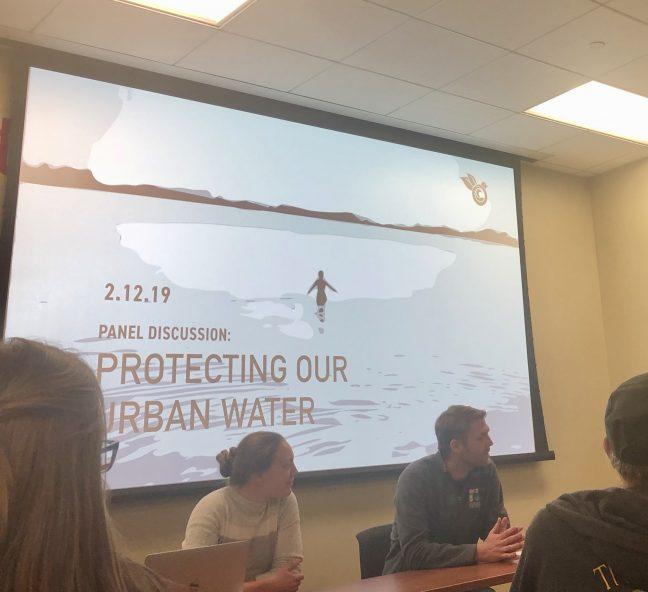Water specialists discussed strategies to protect urban water resources at a forum hosted by Wisconsin’s chapter of the Society for Conservation Biology Tuesday night.
The discussion focused on the reduction of runoff water in urban areas through research that is currently being carried out and governmental policies being created and enforced through urban planning. University of Wisconsin PhD student Carolyn Voter said her research in urban hydrology specifically focuses on the single-family residential sector of Madison and Milwaukee.
“Homeowners make a lot of seemingly small-decisions as they manage their home, but these can affect larger scale urban hydrology,” Voter said.
Madison’s water usage sees dramatic decrease in 2018, continues to 2019
Voter looks at features on homes in their yards and driveways in her research on lowering runoff. She gave the example that de-compacted soil combined with a disconnected rain spout can lower runoff substantially if the practice became more widely applied.
Voter discussed the term “green infrastructure” as a widespread solution cities are attempting to implement across the U.S. These practices though, she said, only have a long-term impact in certain areas.
“Green infrastructure is often sold as this kind of ‘miracle-drug,’” Voter said. “It doesn’t do the same thing everywhere. I think it’s important to get a better sense of how it’s different in different locations.”
Conservation engineer Elliot Mergen discussed Madison’s current policies and structures, along with their level of enforcement through Dane County’s Land and Water Resources Department. Mergen discussed the practices and standards required in attempts to lower runoff toward builders and developers trying to create large areas of impervious surfaces by filling the land with concrete.
Mergen said developers are required to control sediment and ensure runoff rates remain low through environmental practices such as retention ponds, rain gardens or permeable pavement.
“Wet-ponds are the bread and butter stormwater control practice,” Mergen said. “They’re really good at dropping sediment … they’re also very effective at reducing the peak-rates [of runoff] off your site.”
Mergen said the city created initiatives specific to sediment removal, especially in creeks and streams on the edges of the city. “Stuck in the Muck,” Madison’s legacy sediment removal project, started in an effort to lower phosphorus levels in our water.
This project uses a hydraulic dredge to filter the sediment out of the water, dumping sediment into abandoned quarries and putting the water back in the creeks and streams.
Going forward, Mergen hopes to improve the city’s water policies.














